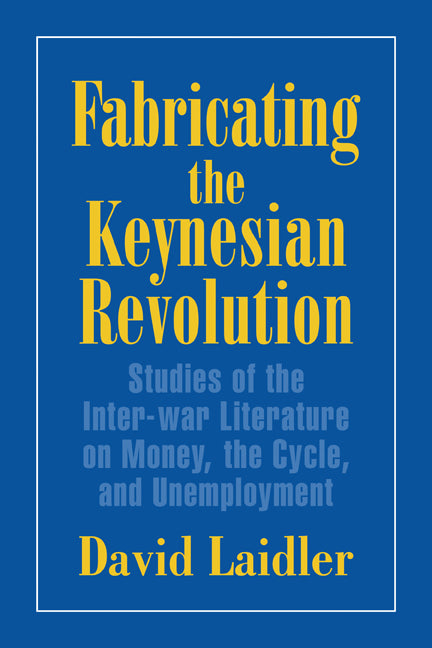Freshly Printed - allow 8 days lead
Couldn't load pickup availability
Fabricating the Keynesian Revolution
Studies of the Inter-war Literature on Money, the Cycle, and Unemployment
Examining the emergence, in the inter-war years, of what came to be called 'Keynesian macroeconomics'.
David Laidler (Author)
9780521645966, Cambridge University Press
Paperback, published 28 March 1999
400 pages, 1 b/w illus.
22.9 x 15.3 x 2.3 cm, 0.55 kg
"...brilliantly conceived and splendidly executed...No one interested in the economics or the economic history of the interwar period should fail to read it." Journal of Economics, Susan Showson, University of Toronto
Examining the emergence, in the inter-war years, of what came to be called 'Keynesian macroeconomics'. This study accepts the novelty of the latter, as represented by the IS-LM model, which in various forms came to dominate the sub-discipline for three decades. It argues, however, that this model did not represent a radical change in economic thinking but rather an extremely selective synthesis of those which had permeated the preceding literature, including Keynes's own contributions to it, not least the General Theory. Hence the book questions the appropriateness of thinking of this development as the outcome of a 'Keynesian Revolution' in economic thought, partly because the most radical aspects of Keynes's own intended contribution were excluded from it, but mainly because IS-LM is better viewed as the end result of twenty years or more of intellectual development to which many others besides Keynes contributed.
Introduction
1. An overview
Part I. The Wicksellians: 2. Wicksellian origins
3. The macrodynamics of the Stockholm school
Part II. The Marshallian Tradition in Britain: 4. Cambridge cycle theory: Lavington, Pigou and Robertson
5. The monetary element in the Cambridge tradition
6. The Treatise on Money and related contributions
7. British discussions of unemployment
Part III. American Analysis of Money and the Cycle: 8. American macroeconomics between World War I and the Depression
9. American macroeconomics in the early 1930s
Part IV. Keynes, the Classical and IS-LM: 10. The General Theory
11. The classics and Mr. Keynes
12. IS-LM and the General Theory
13. Selective synthesis
References.
Subject Areas: Economic theory & philosophy [KCA]


